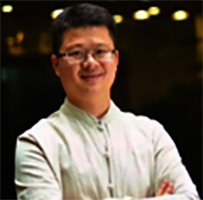Extraordinary Acupoints
Atlas of Applications
- ISBN: 9788797133712
- 2021, 242 pages
39,99 €
incl. VAT
plus shipping costs
Depending on the delivery address VAT may vary at checkout.
Delivery time: ca. 5 - 10 Tage/days
Description
Extraordinary Acupoints (EA) are defined as the acupoints that have a specific location and indication but are not included in the nomenclature system of the 14 channels (12 primary channels, Du and Ren). For instance, Yin Tang (EX-HN3) locates on the Du channel, but it is not included in the standard Du acupoints system, Tai Yang (EX-HN5) does not locate on any of the 14 primary channels. The earliest record on EA can date back to Huang Di Nei Jing (The Yellow Emperor’s Inner Classic). Qi Shu (??) is used to name the extraordinary acupoints. In Bei Ji Qian Jin Yao Fang (Prescriptions Worth Thousand Gold for Emergencies) published in 652 A.D. by Sun Simiao, 187 EA are recorded. In Lei Jing Tu Yi (Illustrations of the Classic of Categorizing) published in 1624 A.D. by Zhang Jingyue, 84 EA are recorded. In Zhen Jiu Ji Cheng (Acupuncture and Moxibustion Collection) published in 1874 A.D. by Liao Runhong, 144 EA are recorded. In Zhen Jiu Jing Wai Qi Xue Tu Pu (Illustration of Extraordinary Acupoints) published in 1963 by Hao Jinkai, 588 EA are recorded. In 2018, the book was re-published, which covered 1649 EA, among which 345 EA locate on the 14 channels, and 1213 do not. Liu Yan collected 2200 EA in his book Zhong Hua Qi Xue Da Cheng (The Chinese Great Compendium of Extraordinary Acupoints).
Besides the 48 standard traditional extraordinary acupoints (TEA), the acupoints in Master Tung Acupuncture (MTA) can also be regarded as EA. Actually, Master Tung named his book Dong Shi Zhen Jiu Zheng Jing Qi Xue Xue in 1973, which is translated as Tung’s Extraordinary Acupoints on Ordinary Channels. It is said that Master Tung used 740 EA, but only 672 are found in his book (Liu, 2011). Additionally, the 38 acupoints of the Pingheng Acupuncture (PHA, ????) System established by Dr. Wang Wenyuan can also be regarded as EA (Zhang, 2016).
This is the first atlas of applications on EA with fine illustration and annotation. Although there are more than 2000 EA, a large part of them is hardly used. I studied a large number of traditional literature and modern researches to screen the practical acupoints in the clinic.
The book covers not only 51 traditional extraordinary acupoints (TEA), but also 97 MTA and 36 PHA acupoints, which have been widely used. In order to make the handbook as practical as possible, acupoints are selected based on the following criteria:
(1) Easily stimulated by acupuncture and moxibustion
(2) Recognized, i.e. recorded in classical literature or text-books on acupuncture and moxibustion
(3) Modern acupoints applied extensively and repeatedly validated, e.g. MTA, PHA, Qian Zheng (Z10.29), etc.
(4) Acupoints frequently reported in researches e.g. PHABecause the book covers acupoints from different resources, a unique numbering system is created to facilitate the teaching, research, and clinical practice of acupuncture, as well as an exchange of information globally.
The nomenclature is based on
(1) the English translation of the Chinese name of each acupoint and
(2) an alphanumeric code derived from the 12 zones of the body, including the finger, hand, underarm, overarm, toe, foot, shank, thigh, ear, head, front the body, and back of the body.
Explanations of the indications are based on its location and internal connection to Zang and Fu organs and various structures of the body e.g. brain, uterus, throat, etc. Most of the explanations are enlightened by my research of Ling Shu (Spiritual Pivot), MTA, and bio-medicine. Actually, plenty of EA can be regarded as an extension of the standard acupoints. For instance, Zu Er Huo (Z6.1) including Huo Zhu and Huo Ying, locate in the region of Tai Chong-LR3 and their indications are closely related to Tai Chong-LR3, even though they vary from Tai Chong-LR3.
Author
Reviews (0)
You must be <a href="https://www.naturmed.de/en/mein-konto/">logged in</a> to post a review.



Reviews
There are no reviews yet.